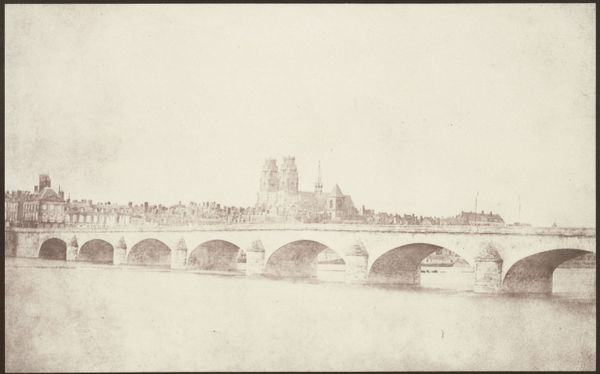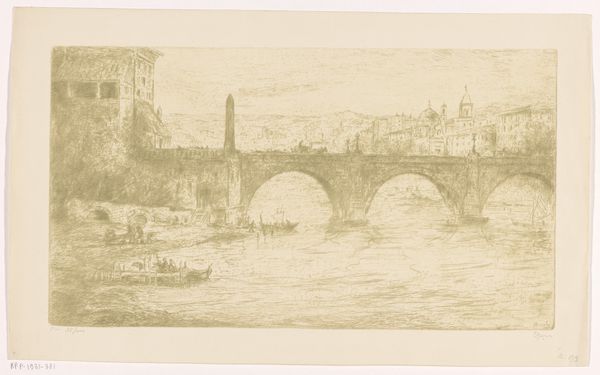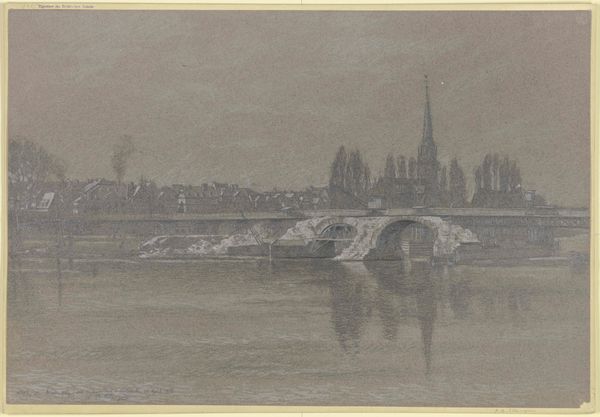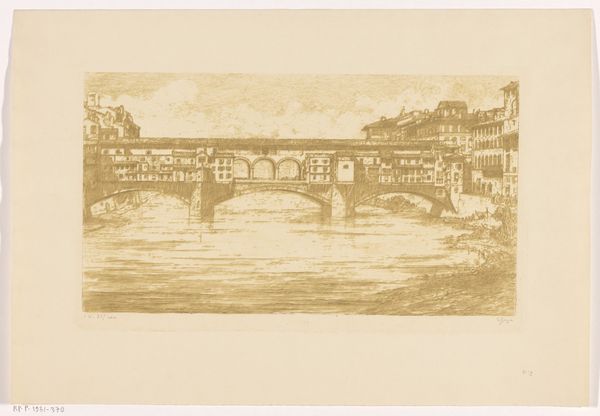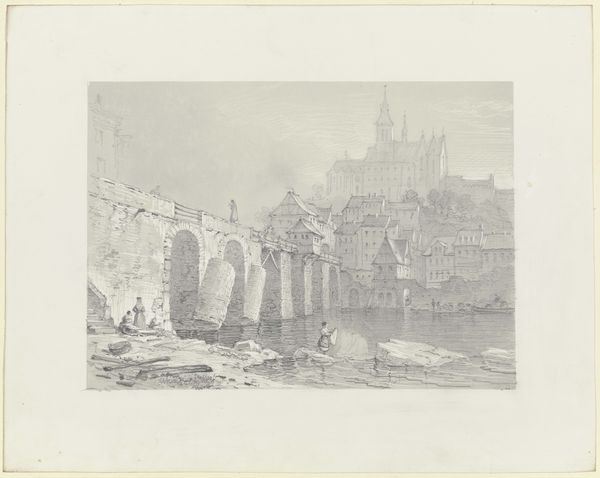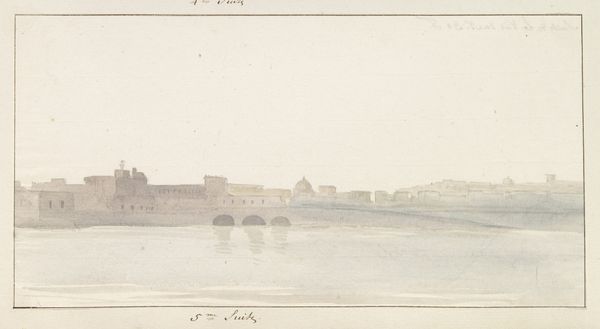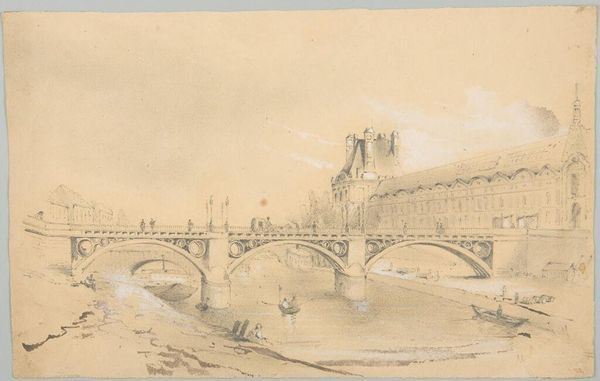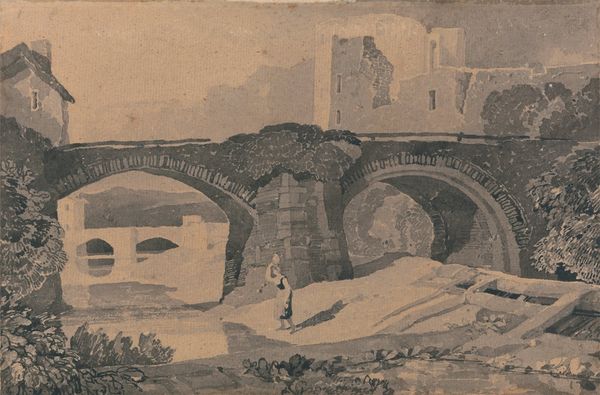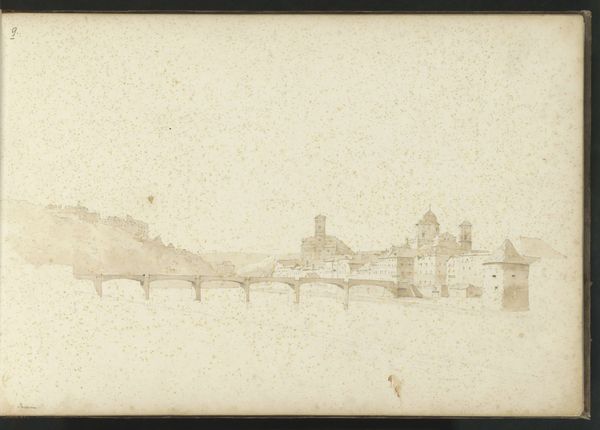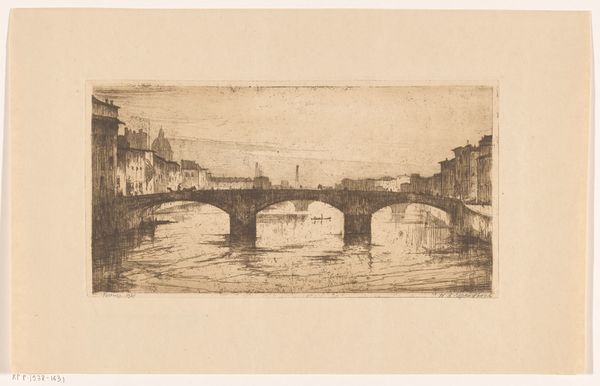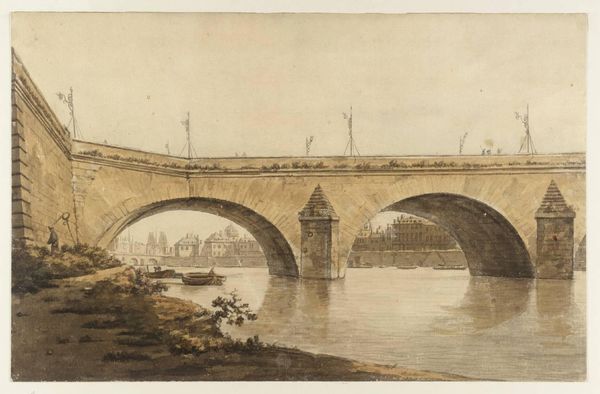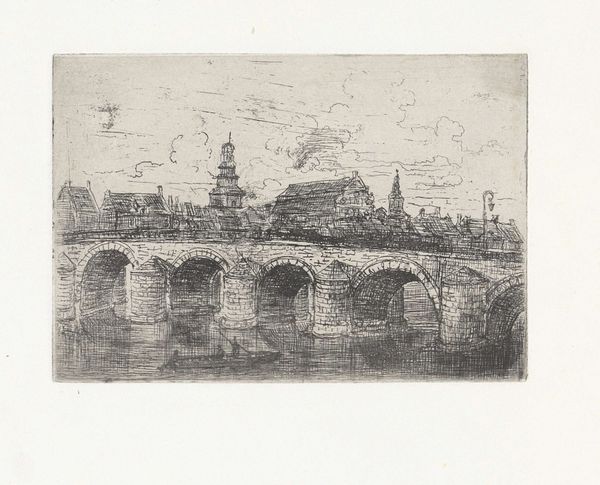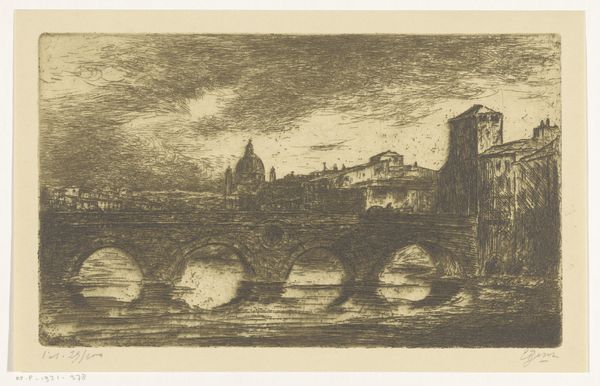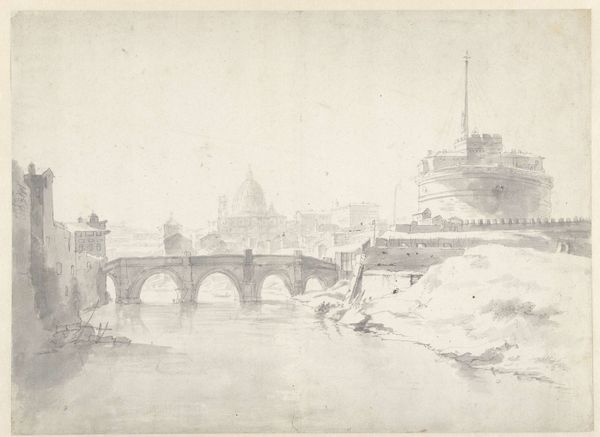
print, photography, albumen-print
#
photo of handprinted image
# print
#
light coloured
#
landscape
#
repetition of white
#
photography
#
romanticism
#
cityscape
#
watercolor
#
albumen-print
Copyright: Public Domain
Curator: William Henry Fox Talbot created this dreamy landscape, "The Bridge of Orleans," sometime between 1843 and 1845. The photograph, an albumen print, now resides at The Met. What strikes you initially about this composition? Editor: The overall pale tonality creates such an ethereal effect—almost like looking at a memory fading over time. The repetition of the bridge arches gives a good structure, yet the image remains subdued. Curator: Absolutely. Focus on those arches and the line they form: it provides an unwavering horizontal against the softness of the water. Note also the meticulous arrangement of light and shadow – especially how the light seems to almost dissolve the stone into mist. Talbot clearly understands how to manipulate photographic tones for a painterly effect. Editor: I agree it feels pictorial. I'm immediately considering how the bridge—both a physical and symbolic connection between places and people—serves as a metaphor within the broader societal context of 19th-century France, specifically around issues of class and mobility. Did it bridge divides? Curator: Interesting idea. If we turn back to its formal components, the placement of the city on the horizon lends a sense of balance. Talbot, I believe, wishes for a harmonious order – the bridge becomes the method through which we view an idealized world. Editor: Or perhaps, considering France’s social and political unrest during this period, maybe the haze hints at obfuscation, veiling rather than clarifying societal structures. Whose gaze is even privileged here? Who is free to move across that bridge, and who is forced to observe it from afar? Curator: Your questions are valid, however it should be recognized Talbot was not documenting unrest, but pioneering a technology. He’s exploring the tonal range and how to produce a stable photographic image, after all. It is more about aesthetic exploration rather than critical commentary. Editor: Perhaps. It is precisely the romanticism of this landscape, this dreamlike aesthetic, which raises further concerns for me. Talbot's artistic license risks erasing real social issues happening at the time. We should never ignore historical context. Curator: Your reading enriches my understanding of the photograph. Indeed, this highlights art’s multifaceted nature. It serves as a testament to Talbot’s artistry, and prompts reflection upon a world ripe with inequality, rendered indirectly through tone and shadow. Editor: Precisely. The visual whispers across time can teach us about power. The beauty can contain difficult truths.
Comments
No comments
Be the first to comment and join the conversation on the ultimate creative platform.
